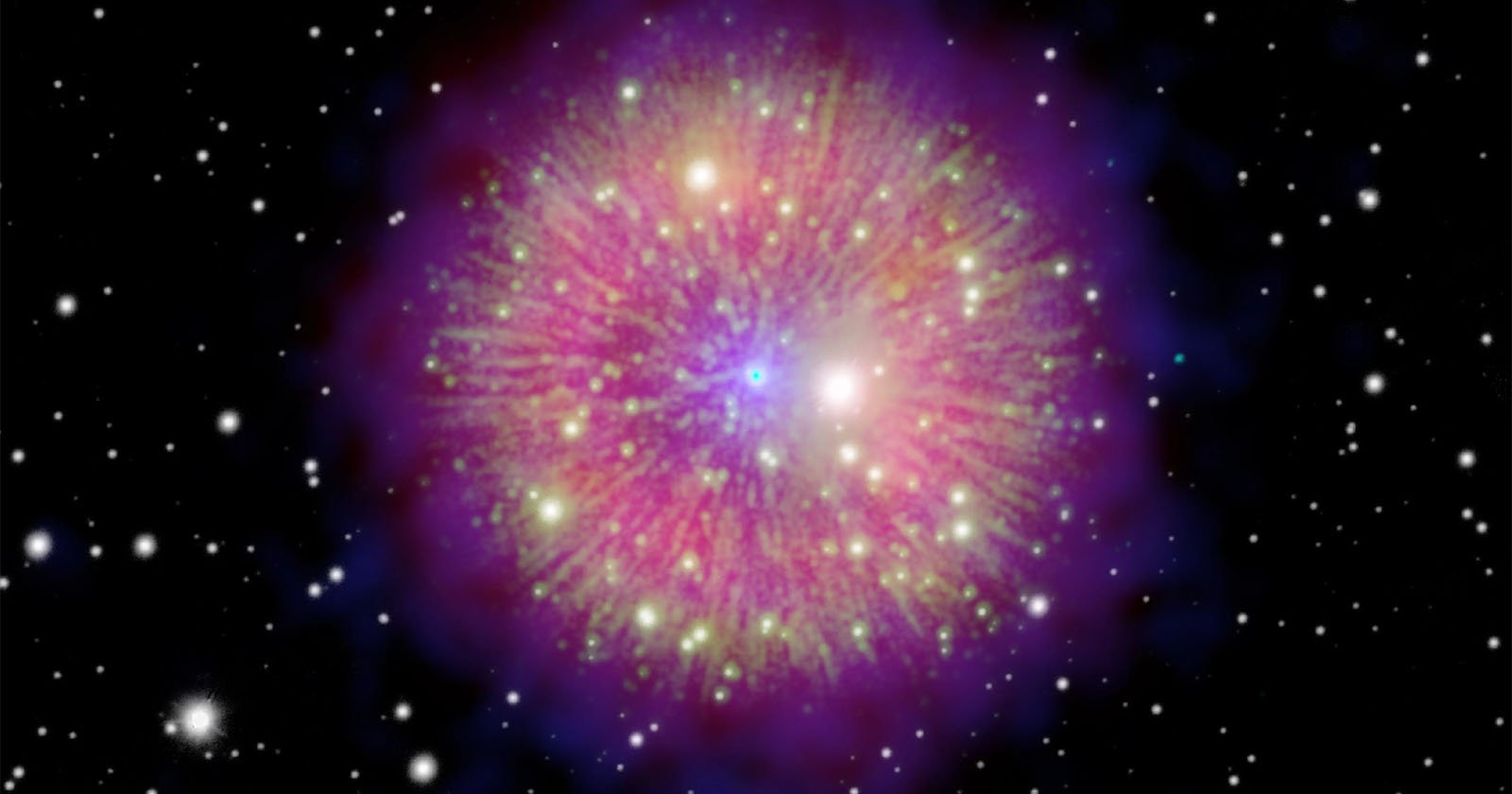
In 1181, a supernova explosion appeared in the night sky for 185 days. Historical records show that the supernova, which some witnesses said looked like a “temporary star,” shined as bright as Saturn in the constellation Cassiopeia. Since the supernova faded and disappeared from the visible night sky, people have searched for its remains in space. Scientists have believed the supernova remnant could be the nebula 3C 58 for some time. However, upon closer inspection, it turned out that the pulsar there is older than supernova 1181. In the last decade, astronomers located another contender: Pa 30. This is a nearly circular nebula with a central star in the constellation Cassiopeia. The image above of Pa 30 was created by combining images from several telescopes. The composite image includes data from the European Space Agency’s (ESA) XMM-Newton telescope (blue), NASA’s Chandra X-ray Observatory (cyan), NASA’s Wide-field Infrared Space Explorer (red and pink), the Hiltner 2.4-meter telescope at the MDM Observatory in Arizona (green), and Pan-STARRS in Hawaii (white). The observed expansion velocity and optical spectroscopy of Pa 30 lend credence to the idea that it is SN 1181. The nebula’s age is approximately 1,000 years, which is well within the realm of possibility for being 843 years old. SN 1181 was first observed between August 4 and 6, 1181. Astronomers in China and Japan recorded the observation across at least eight known texts, making SN 1181 one of just five supernovae known to be identified before the invention of the telescope.
Based on Pa 30’s chemical composition, scientists believe the remnant was formed in a thermonuclear explosion. Specifically, it results from a special supernova event called a sub-luminous Type Iax event. During this event, a pair of white dwarf stars merge, typically not leaving a remnant in its wake. However, if the explosive merging doesn’t complete, a “zombie star” can remain. “This very hot star, one of the hottest stars in the Milky Way (about 200,000 degrees Celsius), has a fast stellar wind with speeds up to 16,000 kilometers per hour. The combination of the star and the nebula makes it a unique opportunity for studying such rare explosions,” NASA explains. Image credits: X-ray: (Chandra) NASA/CXC/U. Manitoba/C. Treturik, (XMM-Newton) ESA/C. Treturik; Optical: (Pan-STARRS) NOIRLab/MDM/Dartmouth/R. Fesen; Infrared: (WISE) NASA/JPL/Caltech/; Image Processing: Univ. of Manitoba/Gilles Ferrand and Jayanne English






